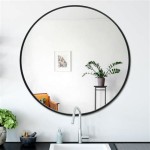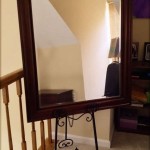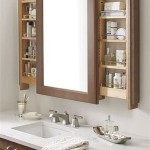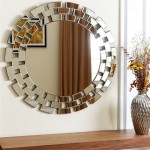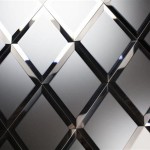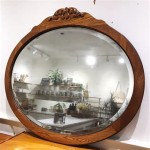How to Make a Two-Way Mirror
A two-way mirror, also known as a one-way mirror, is a fascinating optical device that allows viewers on one side to see through the mirror while those on the other side are unable to see through. This effect is achieved by manipulating the reflectivity and transparency of the mirror using a special coating. While creating a two-way mirror at home can be a fun experiment, it requires careful attention to safety and materials. Here is a guide to help you understand the process and achieve the desired results.
Understanding the Principle of Two-Way Mirrors
The core principle behind a two-way mirror lies in the difference in illumination between the two sides. A two-way mirror is essentially a highly reflective mirror with a thin, semi-transparent coating. When light strikes the mirror, a portion is reflected, while the remainder is transmitted through the coating. The key is that the reflectivity of the mirror is high enough to create a reflective surface, but the coating is thin enough to allow some light to pass through.
To create the one-way effect, one side of the mirror is illuminated brightly, while the other side is kept relatively dark. In a brightly lit room, the light reflected from the mirror is strong enough to obscure the view of the dimly lit room on the other side. Conversely, from the dimly lit room, the reflected light is weak, allowing viewers to see through the mirror into the brightly lit room.
Materials and Equipment
To create a two-way mirror at home, you will need the following materials and equipment:
- Glass sheet (preferably a clear, flat glass sheet)
- Silver nitrate solution (available at some chemical supply stores)
- Ammonia solution (available at most pharmacies)
- Sugar (granulated)
- Water
- Two large containers (for mixing solutions)
- Paint brush
- Rubber gloves and safety goggles
- Well-ventilated workspace
Note: This process involves handling chemicals that can be dangerous. It is essential to exercise extreme caution, wear appropriate safety gear, and work in a well-ventilated area.
Creating the Two-Way Mirror Coating
The process of creating the two-way mirror coating involves a chemical reaction that deposits a thin layer of silver onto the glass surface. Here are the steps:
- Clean the glass sheet thoroughly: Remove any dust, dirt, or grease from the glass surface using a cleaning solution and a lint-free cloth.
- Prepare the silver nitrate solution: In one of the containers, dissolve a small amount of silver nitrate in water. The exact amount will depend on the desired reflectivity, but a starting point is around 10 grams of silver nitrate per 100 ml of water.
- Prepare the ammonia solution: In the other container, dilute ammonia solution with water. The concentration will depend on the specific ammonia solution you are using. Start with a ratio of 1:10 (ammonia to water) and adjust based on the reaction.
- Prepare the reducing solution: In a separate container, dissolve a small amount of sugar in water. This solution will act as a reducing agent, helping to deposit the silver onto the glass surface.
- Coat the glass: Carefully apply the silver nitrate solution to the glass sheet using a paintbrush. Ensure an even coating across the entire surface.
- Expose to ammonia: Slowly add the ammonia solution to the glass sheet, ensuring it reacts evenly with the silver nitrate. Be cautious, as this reaction can generate heat and fumes.
- Add the reducing solution: Once the ammonia solution is applied, slowly add the sugar solution to the glass surface. This will help to complete the chemical reduction process and deposit the silver onto the glass.
- Rinse and dry: After the reaction is complete, rinse the glass sheet thoroughly with water to remove any remaining chemicals. Carefully dry the glass sheet using a clean cloth.
The resulting silver coating will be a thin, translucent layer on the glass, creating the two-way mirror effect.
It's important to note that this process is delicate and may require several trials to achieve the desired transparency and reflectivity. Experiment with the concentration of the solutions and the duration of the reaction to find the optimal combination for your two-way mirror. Remember to always prioritize safety and work in a well-ventilated area.

Easy Ways To Make A One Sided Mirror With Pictures Wikihow

Make A 2 Sided Desktop Infinity Mirror

Making An Infinity Mirror With Two Way Acrylic Cut Plastic Sheeting

Easy Ways To Make A One Sided Mirror With Pictures Wikihow

Dont Use Two Way Mirror But Mercury 80 Make A Diy Magicmirror Forum

How To Make An Infinity Mirror And Easy Optical

Two Way Mirror Dome Complete Guide To See Thru Mirrors

Easy Ways To Make A One Sided Mirror With Pictures Wikihow
How To Tell If A Mirror Is Two Way Or Not Quora

Is It Possible To Make An Inifinty Cube 2 Way Mirror Material Question On Lighting Verticies Unity Forum

